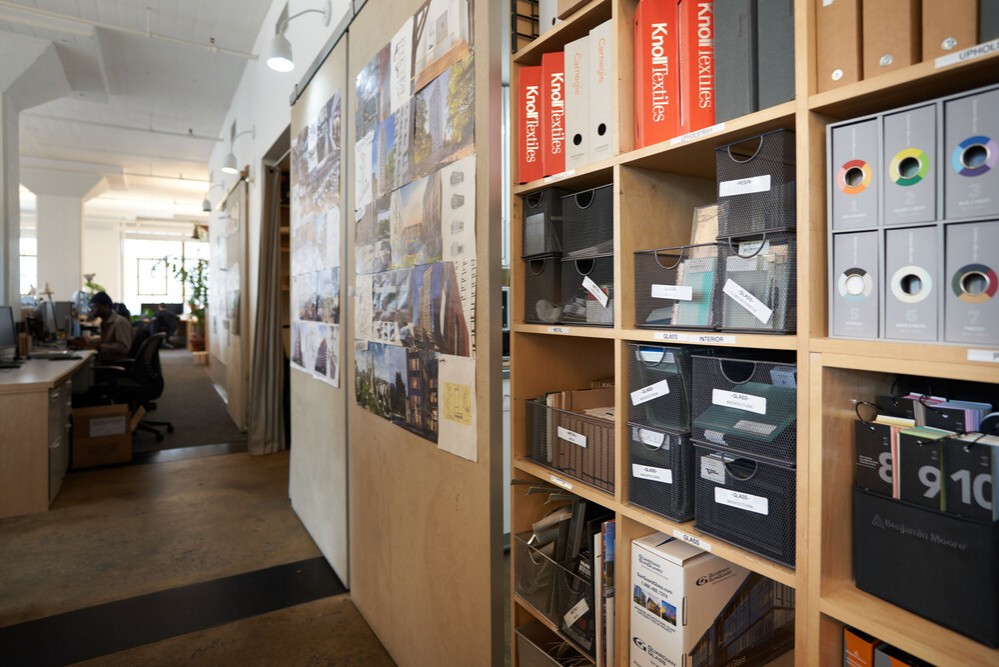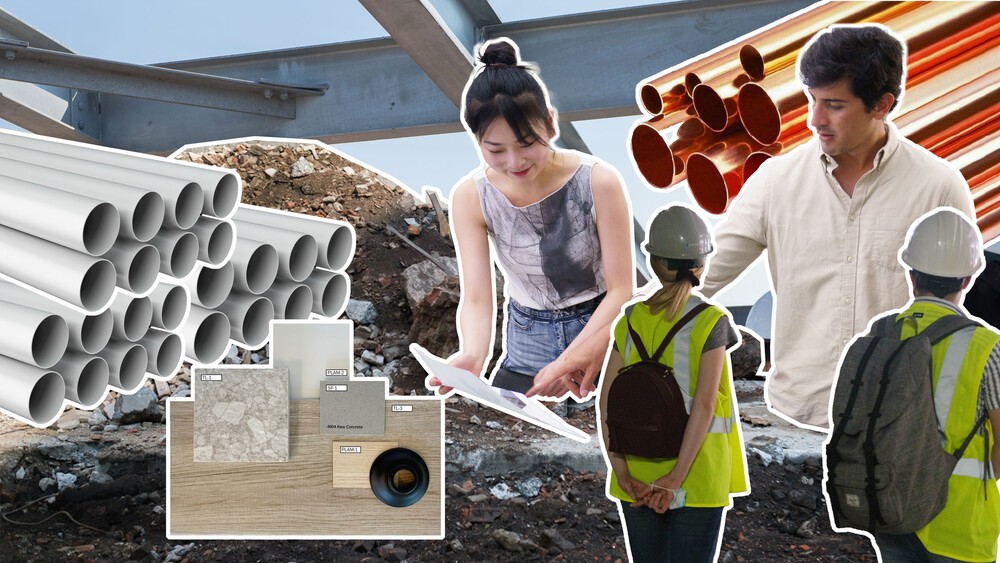The Challenge of Removing Plastics from Our Buildings
Our lives have been plasticized for many years, and the accumulation of plastics is overwhelming us by the day. The building construction industry perpetuates the spread of plastic usage with many applications such as electrical wires in lighting fixtures, plastic piping in plumbing and even PVC (polyvinyl chloride) usage in kitchens that millworkers promote, given its termite resistance and durability. These products and applications perpetuate the manufacture of plastic products, which are based off PVC, while ignoring their harmful environmental and health impacts.
As an advocate for healthy environments and the manufacturing of sustainable materials, focusing on removing plastics from our buildings has been a task I have been willing to take on. For architects, this task might be challenging because we depend greatly on products available from manufacturers and our clients' interests and budget. This de-plasticization effort requires steady coordination with consultants who work with the guts of our buildings, as well as minimizing plastics usage in interior finishes. Removing plastics also requires focused research to find alternative materials, which inevitably adjust the cost for any given project. Fortunately, if all this work is done, the return of investment will be a cleaner project with living spaces that are designed free of red-listed materials, providing a healthier environment for the occupants with lower carbon emissions at the onset.
The Challenge
By 2050 we want to achieve carbon neutrality and the construction industry is focused on energy consumption and strategies to reduce carbon emissions. Plastics alone contribute to carbon and greenhouse gas emissions, as their manufacturing process is derived from fossil fuels which is transformed into many of the products we use today. It is one of the most energy-intensive materials to produce in the world and it remains prevalent, even while carrying red-listed chemicals. Our profession’s challenge has been to reduce carbon emissions globally, but efforts to remove PVC and formaldehyde from building materials have not been as strong. We need to embrace this challenge head on.
Given the efforts of the International Living Future Institute, its Living Building Challenge and Living Product Challenge, a number of projects have committed to reducing their carbon footprint and have engaged in removing as much PVC as possible by adhering to the Materials Petal requirements, the most stringent of all materials certifications. Under LEED (Leadership in Energy and Environmental Design) certifications, dealing with materials credits is usually simpler as it does not oblige projects to avoid PVC, only to demonstrate transparency. Under the Materials Petal, avoiding polyvinyl chlorides due to its formaldehyde content, is a key component. The challenges, to mention a few, involve replacing PVC in plumbing lines, wiring, and lighting, which can require more expensive alternatives. From a design perspective, researching and including these alternative products adds greater complexity, even while certifications like LEED and the Living Building Challenge intend to promote these processes.
If we take, for example, a carpet tile that contains PVC backing, I could argue that owners and builders can make an impact by choosing a carpet product without PVC backing. I would like to believe they would specify such products if alternatives were not twice the cost of the original with less favorable aesthetics. In the end, adoption of PVC-free products will not reach critical mass without plentiful options from manufacturers and reasonable prices to make the change. The biggest impact starts at the beginning of a product’s life cycle, with the manufacturer's decision to remove PVC from their recipe without affecting performance or aesthetics. To our benefit, there are carpet alternatives in the market without PVC backing like the EcoWorx tile by Shaw Contract.
 The Materials Petal of the Living Building Challenge helps provide a framework for the removal of red-listed materials, which are know to cause health issues to humans and the greater ecosystem.
The Materials Petal of the Living Building Challenge helps provide a framework for the removal of red-listed materials, which are know to cause health issues to humans and the greater ecosystem.Another hurdle to removing PVC from plumbing is municipal codes, which can require PVC piping in sewage systems in order to comply with code, creating an unavoidable requirement for civil engineers.
Research and Advocate
As designers of the world's largest contamination-producing industry, we should be the spark that ignites the research process among manufacturers by requesting transparency of their products whenever possible, by requesting EPD's, HPD's, and other third-party certifications available that list the ingredients of each product. Design firms can make an impact as well, by doing their own research based on aesthetics and creating materials libraries that aim to retain only products which hold transparency documentation and comply with the mission of lowering plastics usage.
According to ILFI (International Living Future Institute), a case study that exemplifies the use of a clean library of a firm that completely renovated their library is MSR Design’s new Studio at 510 Marquette, a Petal Certified project that has committed to achieving a clean, sustainable office space that would represent their own mission on how to address materials onwards. After occupying their offices, MSR Design created their own library of materials and guidelines following the lessons learned after using Red2Green’s platform (a dedicated team of material researchers) and learning from the Living Building Challenge.
 Marvel utilizes a materials library which tracks sustainability categories of the products used, aiding selection of options that fall under the 5 Pledges of Materials: human health, social health and equity, ecosystem health, climate health and circular economy.
Marvel utilizes a materials library which tracks sustainability categories of the products used, aiding selection of options that fall under the 5 Pledges of Materials: human health, social health and equity, ecosystem health, climate health and circular economy. Our efforts at Marvel began with the development of a cleaner path with materials specifications by utilizing Material Libraries that track sustainability categories of the products and selecting our options that fall under the 5 Pledges of Materials: human health, social health and equity, ecosystem health, climate health and circular economy. The use of Mindful Materials’ library, a resource that curates their content providing materials that fall under the 5 pledges, facilitates the process of research to abide by the Materials Pledge and direct our focus towards the aesthetics for the interior finishes.
Another resource is GIGA, an organization which provides three databases with different focuses: Reset, Origin and Matter Build. Reset is defined as a standard that helps track the composition of materials, their carbon emissions, how they affect air quality, water conservation and waste management during manufacturing, while curating the best options available in the marketplace. Origin works directly with manufacturers and Matter, helps design firms organize a personalized library. All three sources utilize the database generated by Giga.
If there is a need of having an expert deal with searching for these clean materials, another solution is to hire materials researchers that can build a complete list of materials based on a set framework and coordinated with specs to make sure they are aligned with strict certifications such as Materials Petal.
After researching, what remains is advocating for what is best for our environment and our future humans. It is in the hands of architects, developers, and owners to make a choice for a better future and move ever closer to our environmental goals. The options are on deck and readily available for our use, to embrace the challenge, and pursue our goals.
